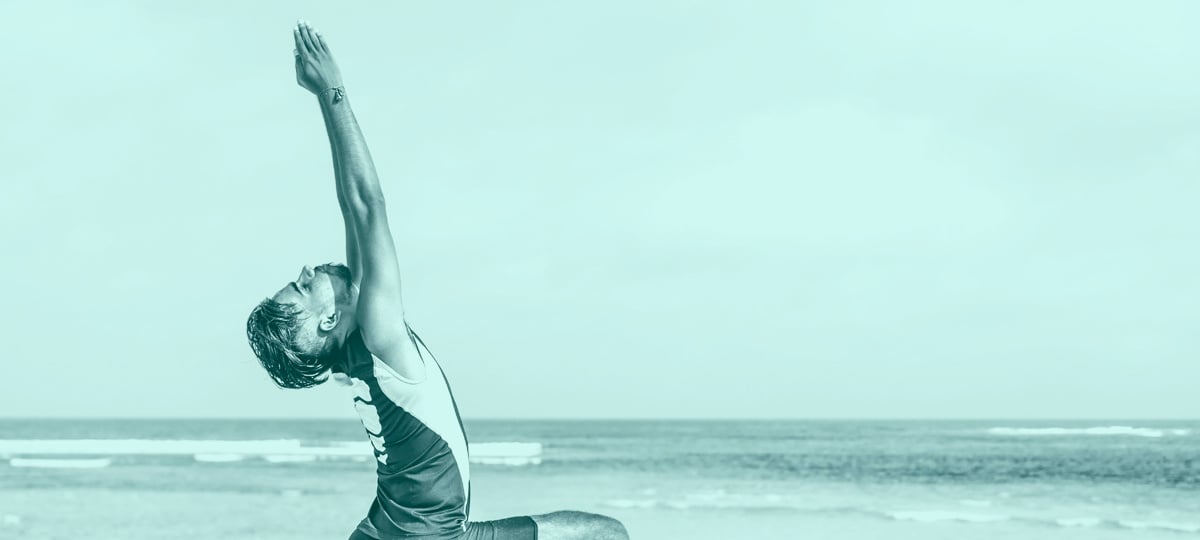
In our Yoga Club and #yoga Slack channel, during mid-April this year, we ran a 1-Week Workshop for Maintaining a Healthy Back and Spine. This workshop highlighted some of the causes of poor spinal health in office workers and how we can remedy it through changing habits and simple Yoga Asana techniques to make our back and ourselves strong and resistant, like a tree prepared to weather any storm.
Workshop Format
One Asana and one Suggestion per day
It will comprise suggestions to break old habits which will improve posture and the demonstration of Yoga Asana, techniques to foster lasting health in the back and spine from an integrated, holistic perspective. This means, all forms of our being are connected; issues felt in our mental or emotional body can result in issues in our physical. Likewise, improving our physical health and posture can bring improvements to mental and emotional health too.
There will be one Asana introduced per day, and each one will have its own benefits:
- Increasing flexibility of the back, spine and, the emotional body
- Developing strength in the muscles of the back and the power of the mental body
- Improving rotation of the spine and broadening one’s perspective of life
- Working to stretch the muscles of the back, releasing any emotional and mental toxins
On the final day, we will put each Asana together into a sequence which can be practiced regularly to bring about health and to prevent any issues in old age.
Alongside each Asana, there will be one suggestion which came from both cultural observation, having grown up in Ireland and now living in Japan and through personal experiences and study of the holistic connection between a healthy spine, posture, and the whole being.
Day 1
Asana 1: Bhujangasana - Cobra Position
This Asana is called Bhujangasana, which means Cobra Pose. It involves lying on your front and raising your upper body off the ground like a snake, using your arms for support.
Benefits: Increases flexibility of the back, spine, and emotional body, among many other benefits.
Prerequisite: If you have any spinal issues, try not to force it too much. You go only to the phase you are comfortable in, starting from Sukha to Maha.
Suggestion 1: Eating
One of the main causes of mild to chronic back pain is posture through sitting. One of the things we do most while seated is eating.
Chairs are a component of modern, western influenced living and they do not help in fashioning a good posture. I have found the Japanese posture from sitting on the ground, rather than chairs, to be far better for building posture than that of cultures so connected to the chair and high table. This is absolutely evident in the average Japanese person’s posture in comparison to that of the average European person for instance.
In Japanese, this is called “Seiza” meaning “proper sitting”. There are many benefits from sitting in this way, from posture to digestion. Try to sit on the ground more with a low table if you have one, instead of using a chair with a higher table. We have seen this position before through Yoga practice as a meditation position called “Vajarasana”.
A second recommendation is to use smaller plates and bowls for your food. Another common trait of modern living is the large plate of food. Another example from Japan and some other parts of Asia is that mealtime is with big communal bowls for each dish, where you serve yourself your portion into small bowls. This allows you to hold the bowl up and bring your food to your face, not your face to your food. This brings a more upright posture and in turn, brings about a good habit through eating.
Day 2
Asana 2: Chaturpadasana
This Asana is called Chaturpadasana, 4 supports position. It is a position with both feet together on the ground, hands on the ground shoulder-width apart, with arms stretched and the body inline.
Benefits: Strengthening of the muscles of the back and the power of the mental body.
Prerequisite: => If this Asana is too difficult and requires too much strength, you can keep your knees on the ground.
Suggestion 2: Working
As remote workers, this gives us incredible freedom but also means we are very connected to technology, mainly laptops, in order to stay connected. The use of laptops often means we are sitting for long hours. If not managed well, this can cause both back, posture, and health issues. However, if we adopt good habits here, we can avoid any of these issues. Let’s go through some DOs and DON’Ts to keep things simple.
DON’T:
- Work from a couch: Especially geared to X-Outpost attendees and digital nomads. When traveling, we don’t always have access to a desk. However, couches aren’t usually designed with your back’s best interests in mind and often encourage poor posture and therefore back issues, if we sit for extended periods on them. Alternatives: sit on the ground at a coffee table or stand up at a high table/counter. However, at any table you need to be upright and have your forearms rest naturally on the table, perpendicular to your upper-arms (and take regular breaks as detailed below).
DO:
- Sit upright with head in line with your spine, forearms resting naturally on your desk making a right angle with your upper arms, with your screen ideally at eye level in front of you.
- Take regular breaks every ~30mins away from the computer. Use your Pomodoro breaks as a time for making coffee/tea, toilet, lunch, meditation, etc. You can always find something useful to do on each break.
- Create a more ergonomic office. See articles on the X-Team website:
- How to Set Up an Ergonomic Workplace and Why You Should Care by X-Teamer Szymon Michalak.
Day 3
Asana 3: Vajra Matsyendrasana
This Asana is called Vajra Matsyendrasana, which is the Lord of the Fish position while in Vajrasana (sitting on your heels).
Benefits: Rotation of the spine and broadening one’s perspective of life.
Suggestion 3: Sleeping/Resting
An effective yet simple one this time. Make sure to sleep on a “hard” mattress or futon. A “soft” bed, while it may feel comfortable to you, if you are used to that, will not help to foster a well aligned and healthy spine. So, if you have a soft bed, or need a new one, it might be time to look into that hard mattress. Alternatively, even better in some ways, an ergonomic one, or futon, and sleep closer to the ground.
Lying supine on hard ground or a flat surface (e.g., tatami/yoga mat) in general is great for spinal health. This position is called Shavasana (Corpse Position), and it does wonders for the back and spine. No wonder it is at the end of most yoga classes. Another option for those Pomodoro breaks, a time for rest and bring some release for the back and spine! https://www.yogajournal.com/practice/savasana-solution
Day 4
Asana 4: Balasana
This Asana is called Balasana, the child’s pose, which is usually a resting Asana, but we will modify it slightly to unblock the hips, lower back, neck, and shoulders. It was the last Asana in our sequence.
For Balasana, we will start in Vajarasana, sitting on the heels and we will practice a variation of Balasana with the knees separated and chest and chin on the ground, then finally, raising the arms behind our back.
Benefits: Stretching the muscles of the back, releasing any emotional and mental toxins
Suggestion 4: Exercise
A simple one again, today. Being active maintains health on all levels, relieving stresses and emotions, balancing energy levels and developing strength, flexibility, and resistance.
One tip I’d like to give for the runners out there is to try to avoid long distance running on concrete. It is an unnatural and unforgiving surface for the back, spine, and knees, especially if you don’t have special shoes to absorb that kind of repeat impact with a solid surface. Try to run on more natural surfaces with some 'give' in them.
Day 5
Asana Sequence for maintaining a healthy back and spine
Now, finally, today is about connecting the dots. This Asana sequence is the combination of asanas: Bhujangasana, Chaturpadasana, Vajra Matsyendrasana and Balasana as introduced previously in the other videos in this playlist.
Benefits:
- Increasing flexibility of the back, spine, and emotional body
- Strengthening of the core muscles of the back and mental body
- Rotation of the spine and broadening one’s perspective of life
- Stretching the muscles of the back, releasing any emotional and mental toxins
Suggestion 5: Establish Markers
This last suggestion also has "connecting the dots" in mind, by finding markers in your life that serve as reminders for you to maintain healthy posture and to give attention to any area that helps you foster a healthy back and spine.
We looked at some of the main ones, such as eating, sleeping, and exercising, but you can establish many other markers in life that also serve this purpose.
E.g.:
Use photographs as an opportunity to remind you to sit in an upright posture. That “say cheese” or whatever people say nowadays before photos is your cue.
Don’t always carry your shopping, etc. on your strong side; alternate sides to ensure the muscles in your back develop in a more balanced way, keeping your back in-line.
It’s not only the major things that affect us in this way; so many subtleties in life that all add up. We can use these as opportunities in a conscious way to ensure our back and spine remain healthy.
Reflection
As always, we had good discussion and sharing of experiences throughout the workshop.

Pushing forward and overcoming challenges.

And of course, some dog pics :D

Along with noticeable benefits from the tips and suggestions.

There are many ways to develop a routine to develop strength and health on all levels and starting with physical posture will bring us not only a strong physical posture but also strengthen out mental and emotional posture too.
TABLE OF CONTENTS



